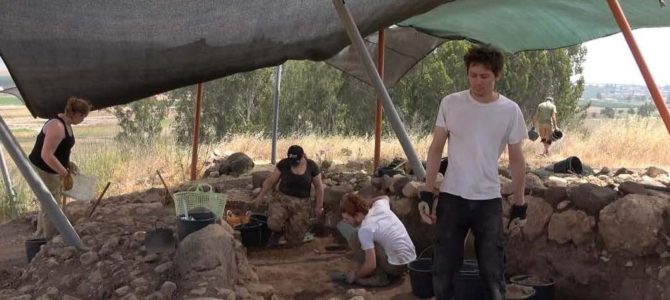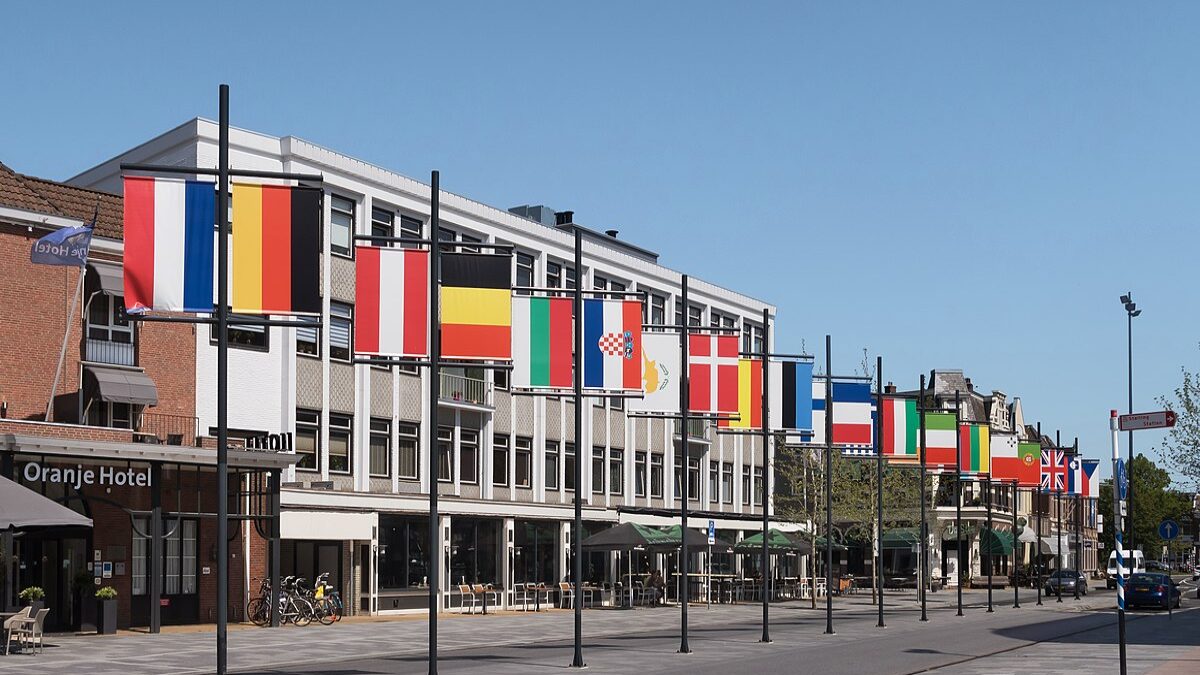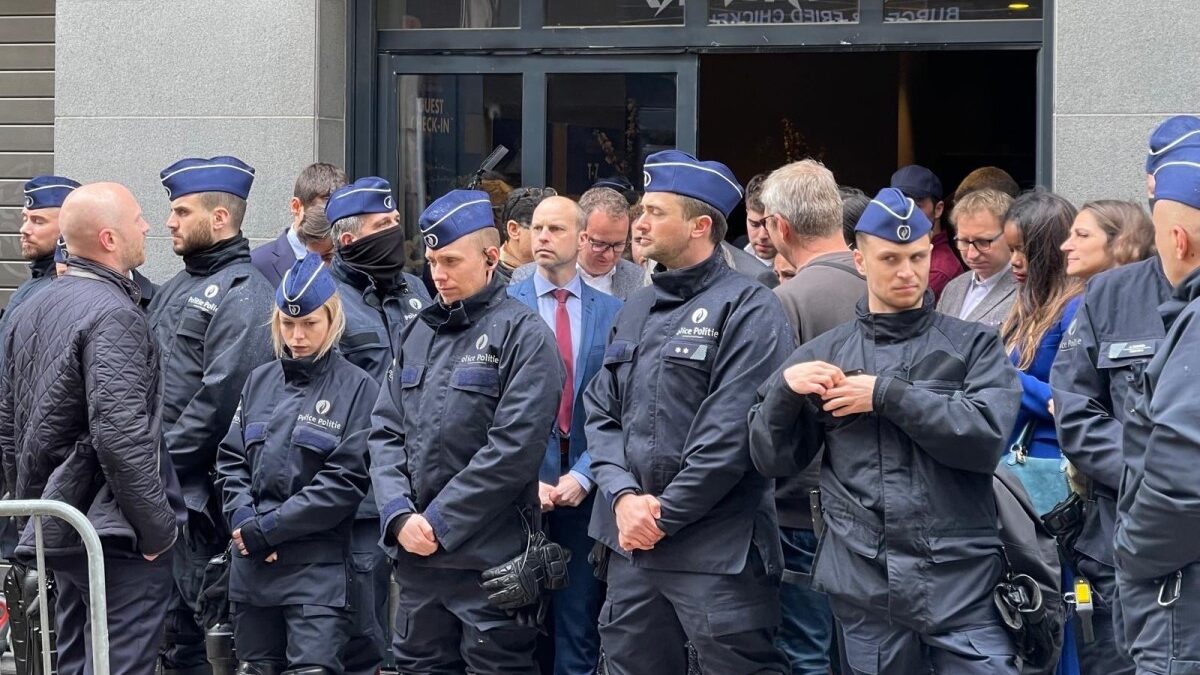
Archaeology provides a window to the past, albeit a narrow and occluded one. Decay and reuse account for the paucity of remains from prehistoric, ancient, and medieval eras. Unlike “The Source” novel by James Michener, one doesn’t typically find exquisite artifacts in neat, sequential, reverse-chronological order. More likely, an occupation site will yield scattered bits of busted pottery, pieces of flint, bone fragments, rocks, and dirt—lots of dirt.
This past summer, I spent two weeks of this past summer in northern Israel with two of my adult children (second son and eldest daughter) at an archaeological dig. This excavation was at the biblical site Jezreel (also known as Zar‘in), the site of Jehu’s assassination of kings Joram of Israel and Ahaziah of Judah and execution of Ahab’s widow Jezebel in 841 bc, recorded in the Bible’s 2 Kings 9:14-37 and 2 Chronicles 22:7-9.

Nazareth lies about 10 miles to the north, across the valley that strides between Jokneam (northwest of Megiddo) to the west and Beth She‘an to the east. Aside from its agricultural importance, this valley offers a conduit between the Via Maris along the Mediterranean and the King’s Highway east of the Jordan River. The famous Mamluk battles of Hattin (Crusader defeat in ad 1187) and Ain Jalut (Mongol defeat in ad 1260) took place nearby. Centuries later, Napoleon routed the Ottomans (ad 1799) in the shadow of Jezreel.
Yes, We Traveled to Do Manual Labor for Vacation
A reasonable person might ask: Why vacation to dig? Why would someone spend time and money far from home to engage in manual labor on mundane chores? And what’s so special about Jezreel?
The first query is somewhat difficult to explain. Although I was raised by theologically traditional Anabaptist parents, my childhood fascination with dinosaurs eventually disabused me from biblical literalism. Yet if Judaism and Christianity claim to be based on historical events, they suggest at least some physical evidence is available. Archaeology offered such a mechanism for me.
The query regarding location involves personal interest in biblical history that has long intrigued me. As a northern headquarters of Israel, watchmen in Jezreel could observe troop movement in the valley. At this strategic site, Jehu’s coup eliminated monarchs from Samaria and Jerusalem. Jehu massacred the Omride clan (2 Kings 10:1-17), but interestingly did not challenge Athaliah, Ahab’s daughter (or perhaps sister), from seizing control in Jerusalem (2 Kings 11:1).
According to 2 Kings 10:18-28, Jehu ostensibly ended pagan worship of Ba‘al Melqart, but meanwhile switched allegiance from the Hamath-Damascus alliance (most notably recorded by Ahab’s participation at Qarqar in 853 bc) and instead paid tribute to the Assyrian empire, as commemorated on Shalmaneser III’s Black Obelisk.
So one might expect Jezreel to present an extensive complex, such as at Hazor (Joshua 11:1-5). Yet to the untrained eye, the region looks appropriate for an observation garrison rather than an administrative fortification. Ancient Near East cities typically developed into mounds called “tells” as residents built atop the residue from prior occupations. Jezreel differs from this usual pattern, adding to its puzzle. What elusive remains hide under the ground piqued my curiosity.
We’re Not the Only People This Crazy
Norma Franklin (PhD) from the University of Haifa and Jennie Ebeling (PhD) from the University of Evansville directed the Jezreel Expedition, assisted by other archaeologists, college students (with majors in either archaeology or religion), and volunteers. Franklin has excavated extensively at Samaria – Israel’s capital during and after the Omride dynasty – and Megiddo.
Although formal reports on Jezreel await further analysis of the strata and artifacts, several articles by Ebeling and Franklin are available online (here’s a summary), as well as from another participant, Philippe Guillaume (DTh) from the University of Berne on Naboth’s vineyard. Guillaume has written several books, one of which, “Land, Credit and Crisis,” I brought along to read on the 13-hour flights. (His book explains ancient economic mutual responsibilities between grain merchants needing labor to produce crops and farmers insuring against harvest risks, intriguingly relating stories in Ruth and Job.)
We dug in various locations during the early phase of this expedition, including rock outcroppings for a winepress, but this year concentrated at a site of Bronze Age occupation near a spring designated Area S as observable from Todd Bolan’s aerial view from the west. My son commented on our work five years earlier at the same site in his video below:
After landing at Ben Gurion airport, the students and volunteers took a bus to Afula, where staff members ferried us to Yizre’el, the local kibbutz, where the Jezreel team stayed. Compared to other such establishments in Israel, Yizre’el reportedly is wealthy due to its manufacture of robots for cleaning swimming pools, and is home to renowned sculptor Berny Fink.
Bring Sunscreen and Lots of Water
Everyone brings large bottles of water in this hot and dry climate. Sunscreen is a must. Insect repellant is helpful. Clothing should be loose to permit flexibility, and sturdy closed-toe footwear is required. The first day involved clearing ground cover around the site periphery, after which excavation began.
Our activity began at 5 am, when the minivans arrived to bring us to the excavation site nearby. Supervisors and participants gathered tools (pick, azada, trowel, brush, or dustpan) and walked to their assigned areas, marked a “square” measuring about 30 feet on each side. Upon arrival before sunrise, the shade covers are raised atop drainage pipes above the squares. Then we began cleaning away loose soil, straightening the balks (vertical boundaries of the squares), lifting out stones and boulders, attacking and removing dirt in the squares to reach lower layers, and so forth. The photographs that follow are from my son’s personal collection.

We focused on finding pottery sherds, as well as chipped flint and pieces of bone to deposit in our baskets, assigned by location and date. All the lifting, crawling, and digging are rather taxing on the back and knees, and one must often carefully exit the work squares to drink water and thus avoid dehydration.

At Jezreel, breakfast was brought at about 9 am to the spring, after which work resumed a half-hour later. Those not dredging or cleaning in the squares cart dirt and rocks, take depth measurements for survey purposes, or sketch grid layouts of strata on vellum sheets.

Site supervisors redirected diggers to different locations within the square, and studied uncovered rock piles to determine whether these might be ancient walls or merely debris. Adjacent squares might be combined by removing the balk separating them. At about 12:30 pm, students and volunteers took the baskets of broken pottery to the spring for washing, and everyone returned to the kibbutz cafeteria for lunch about 1:30 pm.

After lunch, some of us visited the pool or washed clothes, others showered and crashed for a nap. Late afternoon often involved pottery reading. Students and volunteers would dump the washed contents of the baskets onto folding tables for the archaeologists to examine. Based on their experience, they decided the era into which the potsherds belonged.
The archaeologists then selected which pieces should be preserved for further study, typically items that included part of a rim, because these enabled identification of the vessel type. Jezreel Area S contained mostly Early Bronze Age (late fourth millennium bc), with some Neolithic (fifth millennium bc), Middle Bronze Age (late third and early second millennia bc, notable by wheel marks) and occasionally later artifacts from Iron Age, Persian, Roman, and Mamluk periods.

On occasion, the directors visited to neighboring sites, such as Megiddo, Beth She‘an, Nazareth, Capernaum, and Zippori (Sepphoris). Students, who participated the full four weeks, could visit additional places.
Israeli highway destination signs are written in Hebrew, Arabic, and Roman characters. The language of commercial signs depends on the local community’s predominant ethnicities. Evenings sometimes featured a lecture on a specific topic. Ebeling presented on basalt grinding stones, and years earlier Guillaume described ancient board games.

Removed from agrarian rhythms and continual associations with neighbors, our post-industrial lifestyles make it harder to understand some biblical admonitions. The cultural obligations imposed on Iron Age clans and parables taught in Roman period settings today can evoke merely weak or incomplete metaphors in our minds, whether reading the scriptures at home or listening to sermons from the pulpit.
This ancient refuse, buried under compacted earth and debris, offers including a few tantalizing clues about our past, which only specialists can competently interpret, often in complete disagreement with their colleagues. Truly understanding ancient periods requires broad knowledge of agriculture, anatomy, architecture, burial rites, flora and fauna, military weapons and tactics, topography, written languages, and many more disparate disciplines that explain the landscape and the material conditions in which their inhabitants lived.
Most of this knowledge can only be acquired after decades of intense academic study and patient fieldwork. So, the uninitiated stand at the sidelines bewildered.
Nonetheless, participating in this dirt-digging exercise can, despite soreness and discomfort, encourage a deeper theological insight into monotheism’s original milieu in the Levant. Relaxing at a luxury hotel might entail more pleasant surroundings, but for the curious, such tranquility appears far less rewarding.
Participants’ motivations for such endeavors, such as developing more profound religious devotion or satisfying anthropological curiosity, might vary between individuals or even combine. For some of us, that’s reason enough.









